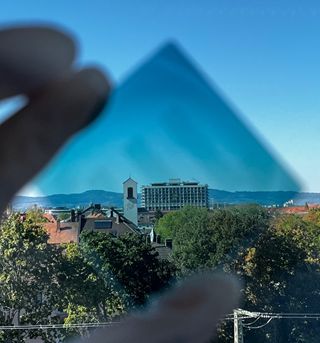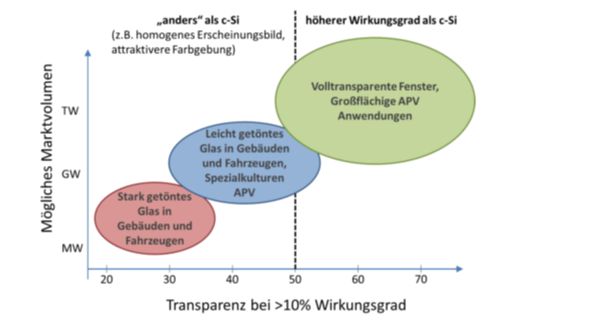| Duration: | 04/2021 - 03/2023 |
| Contracting Authority/ Sponsors: | Bundesministerium für Wirtschaft und Klimaschutz (BMWK) |
| Project Partners: | Heraeus Epurio, ROWO Coating, ASCA, Universität Freiburg |
| Project Focus: |
See-Through-PV – Development of Organic Solar Modules with High Visual Transparency


For numerous potential photovoltaic applications on buildings, vehicles or in agriculture, significant transparency of solar cells or modules in the visible spectral range is desirable, if not a prerequisite for successful implementation. Certain organic semiconductors are capable of strongly absorbing infrared radiation while almost completely transmitting visible light. This remarkable property is the key to the realization of organic solar modules with high visual transmission and homogeneous appearance, i.e. in particular without gaps. For this purpose, in addition to organic absorber materials, novel electrodes with very specific optical properties have to be developed.
In the project Durchblick-PV, the efficiency and visual transmission of organic solar cells are to be increased. To this end, new combinations of organic semiconductors are being tested, in particular so-called non-fullerene acceptors in the photoactive layer, which exhibit very strong absorption in the near-infrared spectral range and allow visible light to pass through almost unhindered. Work is also underway on the two electrodes. On the front side of the solar cells, it is important to have very high and very broadband transmission so that both visible light and NIR light can pass through. Systems based on PEDOT:PSS, which are being developed at Heraeus, are being investigated for this purpose. On the back of the solar cell, the second electrode should allow the visible light to pass through as much as possible, while the NIR light should be strongly reflected in order to return to the solar cell where it is absorbed and converted into electricity. For this purpose, sputtered multilayer systems based on silver are being developed at Fraunhofer ISE. Modeling and experimental parameter optimization are used to develop a system that meets the simultaneous requirements for cutoff wavelength, edge steepness, electrical contacting of the solar cell, sheet resistance and manufacturing costs. Laser structuring is used to structure the solar cells into scalable modules. Optimal laser parameters are determined for the various structuring steps and transparent OPV modules are finally produced. The long-term stability of the solar cells is also being investigated.